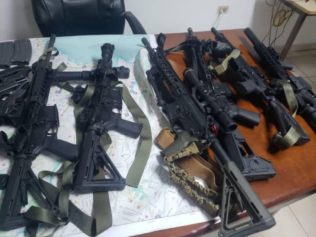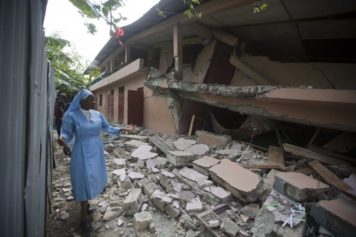Three years after the devastating Port-au-Prince earthquake, one of the largest international relief projects in Haiti isn’t anywhere near where the quake hit. It’s an industrial park on the north coast halfway between Cap-Haitien and the border with the Dominican Republic.
Aid agencies are pouring millions of dollars into the project to encourage people to move out of the overcrowded capital and create jobs. Critics, however, say the jobs don’t pay enough to lift people out of poverty.
The Caracol Industrial Park is one of the most tangible developments to come out of the billions of dollars in post-earthquake aid to Haiti.
The sprawling 600-acre compound sits in what used to be small vegetable plots and scrubby pastures. It officially opened late last year, but much of the park is still under construction.
Georges Sassine, the head the Haitian government agency that oversees industrial parks, says the goal is for Caracol to directly hire 60,000 people, spurring the growth of tens of thousands of other jobs outside the park.
Appeal To Manufacturers
Sassine has been in Haiti’s garment manufacturing business for decades and says he’s confident that international manufacturers will be eager to lease space in the facility.
“Why do they want to come here?” he asks rhetorically. “Economics, the availability of labor, cost of labor, access to the U.S. market. We are very close to the U.S., plus you are not paying duty. So it’s win-win-win.”
Labor all across Haiti is plentiful and cheap. Even with only a fraction of the industrial park up and running, dozens of people are lined up outside the gates hoping to find work. The minimum wage in Haiti is $5 a day. And thanks to legislation passed by the U.S. Congress after the earthquake, most Haitian textiles can now enter the U.S. duty-free.
The anchor tenant at the park is the Korean clothing giant SAE-A.
Inside a brightly lit new factory, women in lime-green smocks and matching headscarves sit in long rows. Each row produces a different color T-shirt. The production lines look like long industrial stripes of purple, black, green and white.
The shirts labeled “Made in Haiti” will sell for $7 apiece at Wal-Mart stores in the United States.
SAE-A currently has just over a thousand people working at Caracol but plans to hire thousands more. Sherwin-Williams recently opened a paint production facility across the street. Other blue-metal buildings are going up across the park.
Read the rest of this story on NPR


